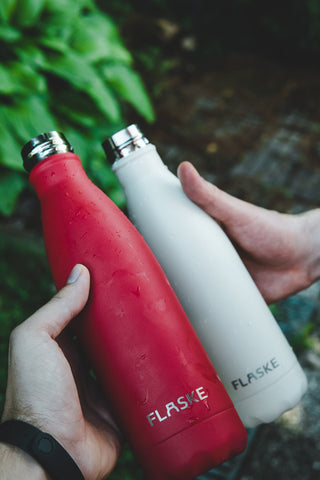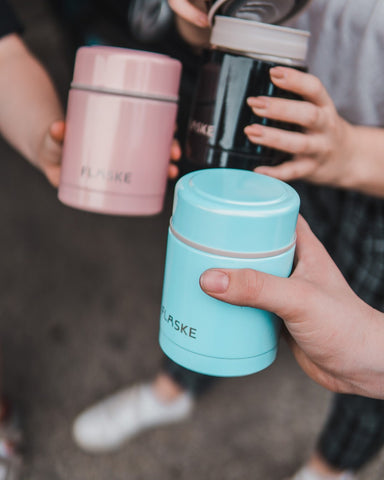Are you ready to reduce your carbon footprint and work towards a cleaner planet? Start by learning which are the most common plastic items found in the ocean, then eliminate them from your day-to-day life.
Plastic is produced in millions of tonnes worldwide every year, but the ocean is already swimming with plastic waste. Floating garbage patches are an obvious problem. What’s less obvious are the concentrated areas where microplastics float beneath the ocean’s surface; the plastic soup that pollutes the sea and endangers sea life.
Yet, the easiest way for us to understand the plastic waste problem, without sailing out to sea, is by looking at the plastic items found in the ocean coastlines.
6 of the most common plastic items found in the ocean in 2019
The Ocean Conservatory recorded the quantity and types of everyday items found in the 2019 International Ocean Cleanup. Here are six items that made it into the top 10 trash found in the ocean.
Food Wrappers
Most people shop in supermarkets. Unfortunately, most items on the supermarket shelves are heavily packaged in non-recyclable and non-biodegradable materials. Especially imported perishable goods which need extra packaging to protect them on the long journey from a foreign farm to a local shop.
Food wrappers aren’t just ugly; they also pose a threat to wildlife and sea life which often ingest tiny plastic parts as the wrappers break down.

Eco-friendly alternative:
You can minimise damage by buying foods without packaging, like loose fruits and vegetables, instead of packaged goods. Bring reusable bags and insulated food pot to farmers markets and zero-waste stores if you have one in your area.
When you can’t avoid food wrappers, opt for foods in reusable containers, such as screw-top jars or pots, or foods that come in recyclable or recycled packaging. Although it’s not yet widely available, some food and snack companies now package their products in compostable packaging, just do a little research and shop with care. Alternatively, you could prepare your foods and snacks at home and take them with you in a reusable insulated food pot.
Also Read: 5 foods to put in a thermal lunch box
Cigarette butts
Volunteers collected over 4 million cigarette butts in the 2019 International Coastal Cleanup from beaches, bays, and coastal areas. Cigarette butts made up 3,628 of the 14,365 trash items collected in the Netherlands.
What’s the problem with flicking cigarette butts onto the beach instead of disposing of them responsibly? Won’t they biodegrade anyway? Eventually yes, but the filters in cigarette butts contain a plastic called cellulose acetate. This material takes up to 15 years to biodegrade completely, releasing toxins in the process of breaking down. This means that, even if you put your cigarette butts in the bin, they’re still going to hang around in landfill sites and pollute the soil. What’s the alternative?

Eco-friendly alternative:
An unpopular but valid solution is for people who smoke to give up cigarettes which will protect personal health as well as the health of the planet.
A more realistic and easier alternative is to switch to filters made from natural, biodegradable, recycled or chemical-free materials. Some environmentally conscious tobacco companies are already on the case, such as Greengo, a Dutch cigarette company that produces filters made from 100% recycled, unbleached, and natural fibres.
Plastic Bottles & Caps
Over 1.9 million plastic beverage bottles and more than 1.5 million plastic bottle caps were collected. Thousands of disposable bottles are bought every single day. Because single-use plastic bottles are not safe to reuse and can only be recycled a limited number of times, the majority end up in the trash.

Eco-friendly alternative:
The good news is that plastic bottles and caps are easily avoided. High quality and food-safe stainless steel water bottles that are 100% recyclable but tough enough to last for years will keep tonnes of plastic out of the ocean. It will help you stay hydrated and save you money at the same time. A thermally insulated FLASKE Bottle costs just €30 and refilling it costs nothing. How much do you spend on bottled water each month?
You don’t need to stick to water either. Try making soft beverages at home and taking them with you in a reusable water bottle. And, if you do need to buy a drink on the go, choose something in a can or a glass bottle so that you can recycle it after. Unlike plastic, glass and aluminium, as well as stainless steel, can be recycled an unlimited number of times.
Also Read: The 10 coolest FLASKE reusable water bottles to buy online

Plastic Straws & Stirrers
Since the heartbreaking video of a sea turtle with a plastic straw wedged in its nose went viral, straws have been symbolic of the risk of ocean pollution to sea life. Although plastic straw and stirrer bans are now in force in many cities or whole countries, 942,992 were collected in the International Coastal Cleanup.

Eco-friendly alternative:
Here’s a simple solution. Don’t use straws. Most of us learnt to drink from a glass, cup, or bottle when we were kids. Unless you have a specific condition that makes it difficult to drink without a straw, you probably don’t need to use one. That said, there are eco-friendly alternatives for anyone who doesn’t want to give up straws. Bamboo straws and stainless-steel straws are trendy, inexpensive, and easy to clean.
Plastic Shopping Bags
Totally 1,351,390 plastic bags, including grocery bags and other plastic bags, were found in the International Coastal Cleanup making it one of the biggest plastic waste items that we use every day. Sea life frequently gets tangled up in plastic bags or eats plastic parts which stay in the stomach for their entire life. A classic example of this is sea turtles which often mistake plastic bags for their usual prey, jellyfish.

Eco-friendly alternative
Again, this is another simple swap that makes a massive difference to the environment. Just take a reusable cotton tote with you whenever you go to the market and have a few ready for your grocery shopping. Switch plastic bin liners for compostable bin liners, or don’t use a liner at all.
Also Read: 30 top tips for going zero-waste
Plastic Dinner Ware & Take Away Containers
The last item on our list is actually a group of common plastic items found in the ocean. Disposable dining ware, which includes plastic plates, cutlery, cups, single-use Styrofoam, and take away containers. This group makes up a total of over 1.4 million items from the 2019 International Coastal Cleanup.
According to the 2020 record from the Ocean Conservatory:
“enough plastic cutlery was found to feed a three-course meal to 66,000 sharks.”
While that conjures up an amusing image of sharks sitting at the dining table, the reality is that these non-biodegradable and sharp utensils are a genuine risk to sea life.
Eco-friendly alternative:
Once again, the eco-friendly alternative is cheap, easy, and better for your health. Switch disposable cutlery for a stylish travel set of bamboo cutlery, wash your dishes, or replace disposable plastics with plates and cups made from compostable materials.
To minimise take away containers, consider eating out instead of getting your food to go. Or, bring your own reusable insulated food container to take your food home in.
Let’s Clean Up the Plastic Soup
You can help the Plastic Soup Foundation to clean our oceans by reducing the amount of trash that goes into it every single day. Switching disposable plastic items, such as those mentioned above, for reusable, recyclable, or compostable alternatives is the first and easiest step on the eco-friendly journey.
Also Read: Why we support the Plastic Soup Foundation
For more inspiration on eco-friendly and plastic-free products that will help you live more sustainably, visit our FLASKE Collection.


